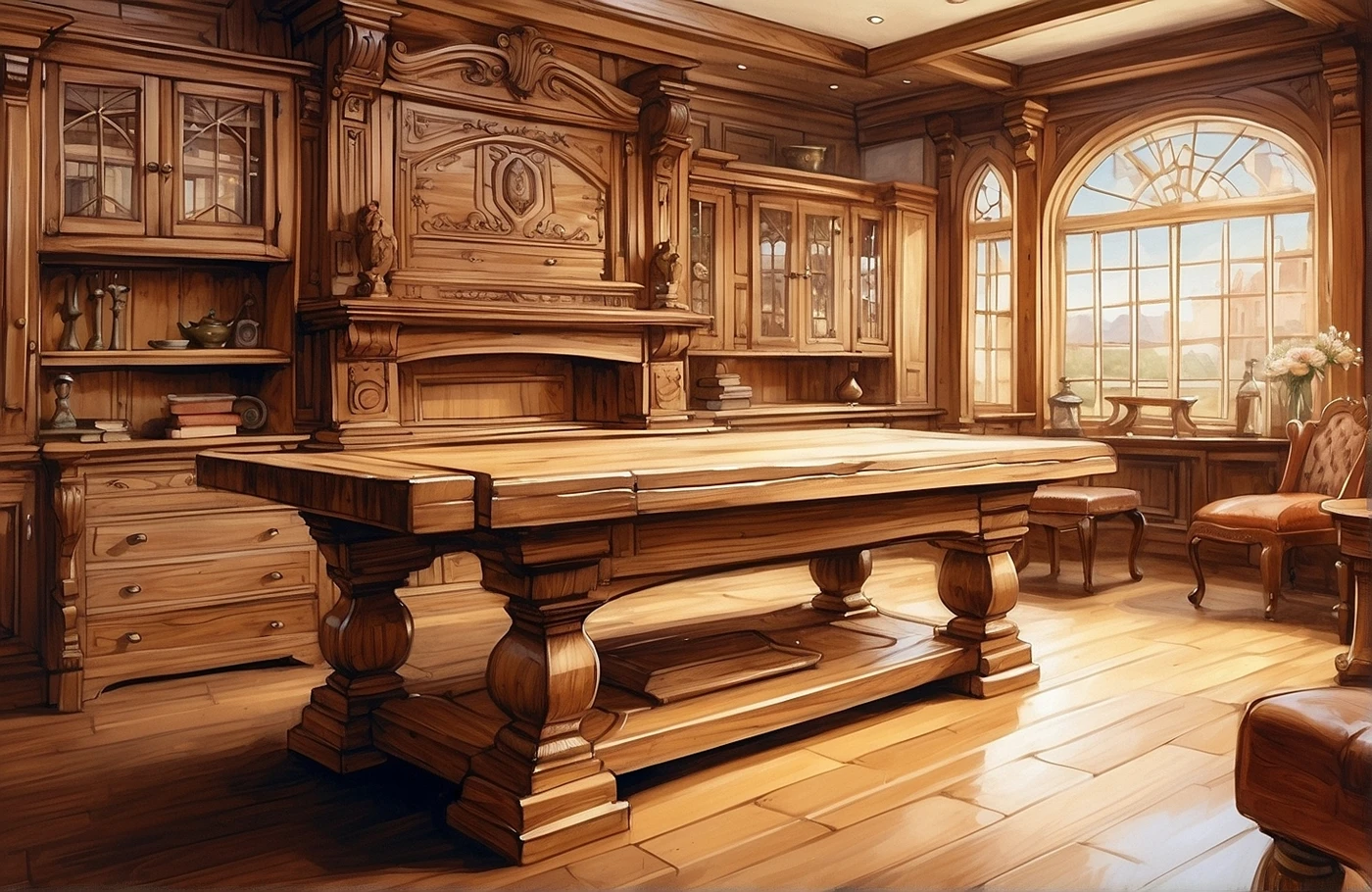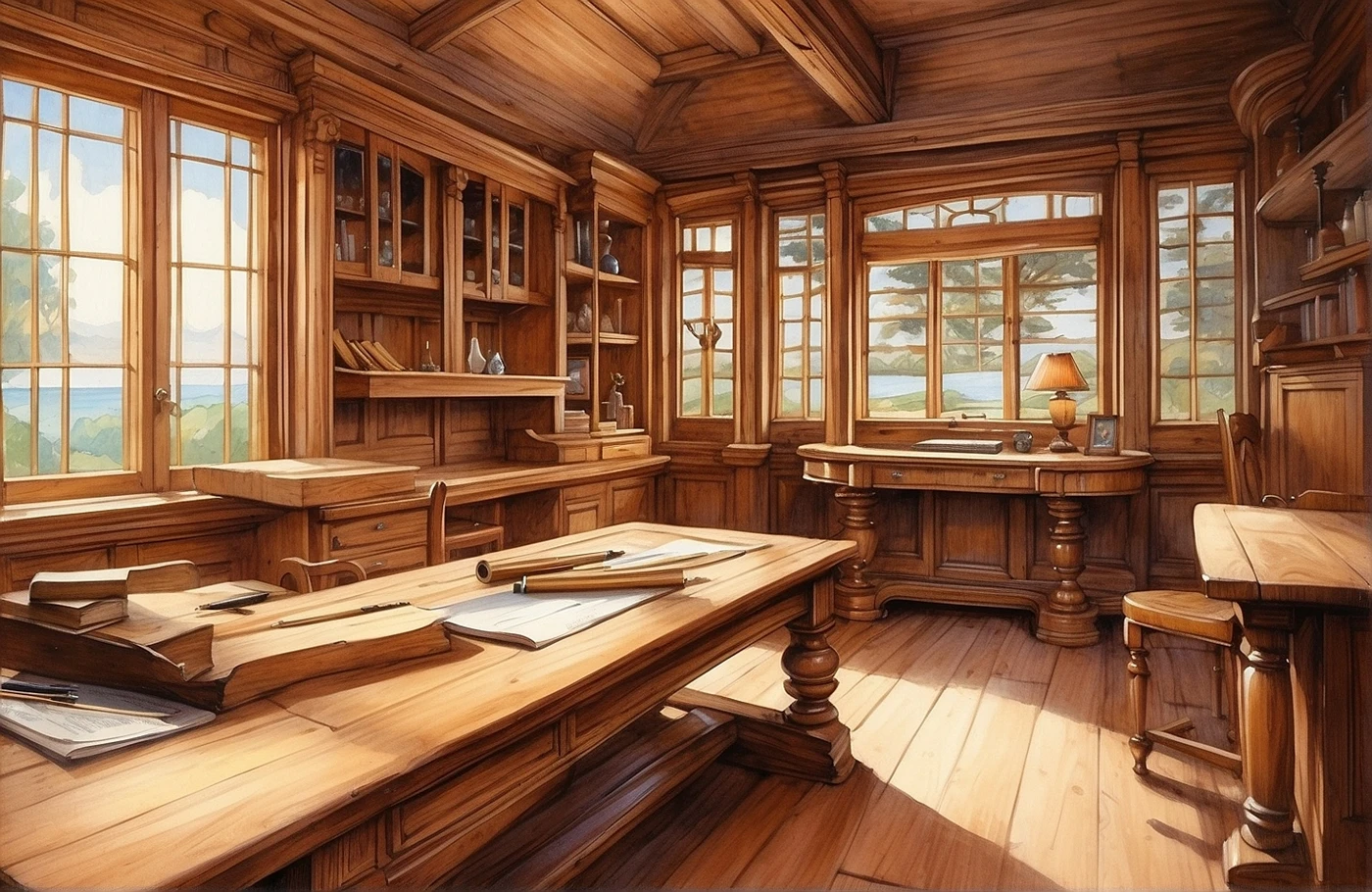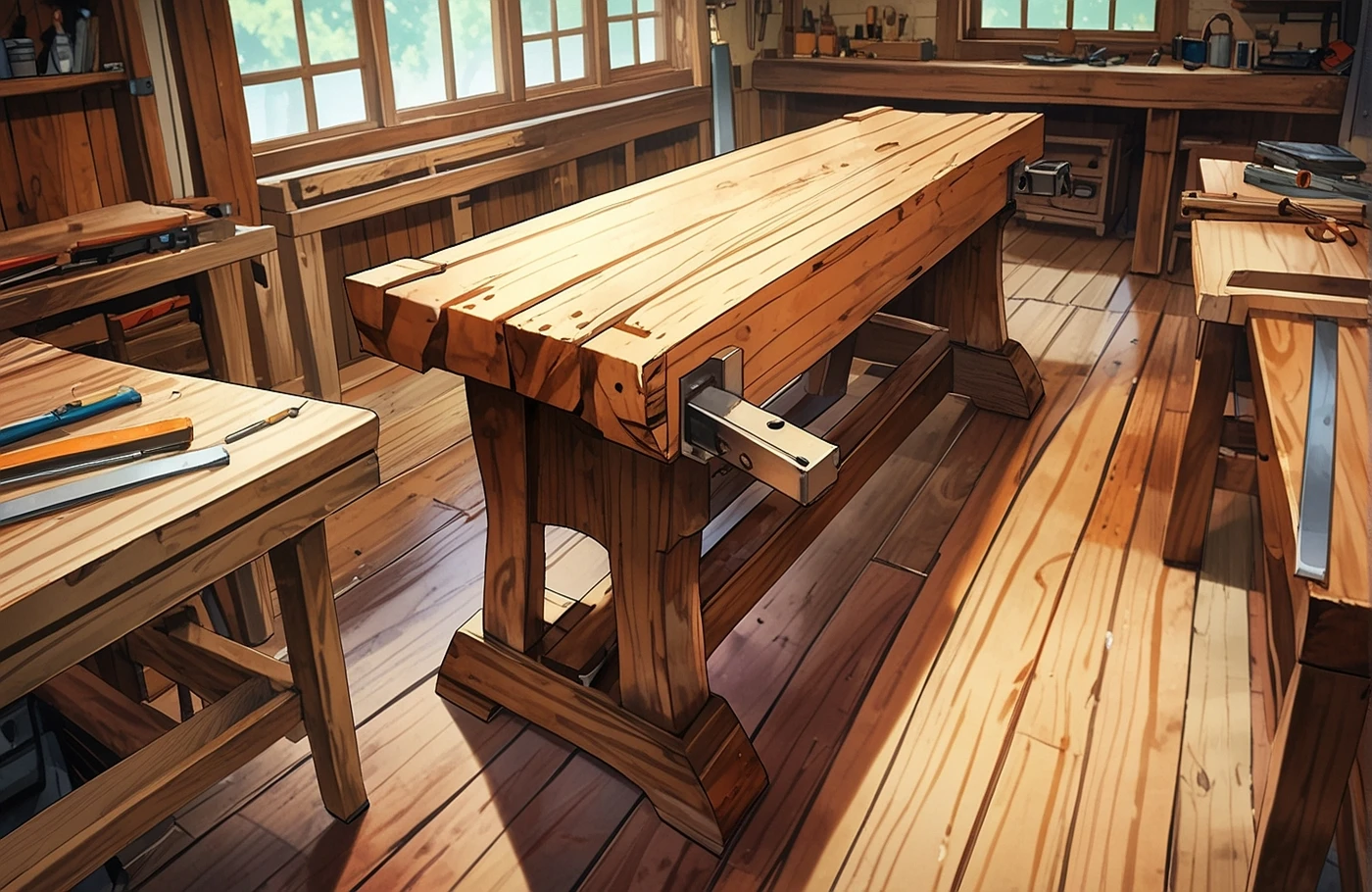How To Paint Varnished Woodwork

Preparing the Surface: Tips for Painting Varnished Woodwork
Preparing the Surface: Unlocking the Key to Painting Varnished Woodwork
Painting over varnished woodwork can be a daunting task, but with the right techniques and preparation, you can achieve a flawless finish. Whether you're refreshing your home's interior or reviving a cherished piece of furniture, the key to success lies in proper surface preparation. In this comprehensive guide, we'll explore the essential steps to ensure your varnished woodwork is ready for a stunning new look.
Assessing the Condition of the Varnish
Before you begin the painting process, it's crucial to evaluate the current state of the varnish. Inspect the surface for any signs of peeling, cracking, or excessive wear. If the varnish is in relatively good condition, with minimal signs of deterioration, you may be able to proceed with a light sanding. However, if the varnish is severely damaged or flaking, it's best to remove it completely to ensure a smooth and long-lasting paint application.
Removing Existing Varnish
If the varnish on your woodwork needs to be removed, there are several methods you can use. One effective approach is to use a chemical stripper. Apply the stripper according to the manufacturer's instructions, and allow it to sit for the recommended time before scraping away the softened varnish. Alternatively, you can opt for a more labor-intensive but effective method: sanding. Start with a coarse-grit sandpaper and gradually work your way up to a finer grit, ensuring the surface is completely smooth and free of any remaining varnish.
Cleaning and Degreasing the Surface
Once the surface is free of varnish, it's essential to thoroughly clean and degrease the wood. Any residual dirt, grease, or contaminants can interfere with the paint's adhesion, leading to a poor finish. Use a degreasing agent or a mixture of warm water and mild detergent to clean the surface, then rinse and allow it to dry completely.
Sanding and Smoothing the Surface
With the varnish removed and the surface cleaned, it's time to sand the woodwork to create a smooth and uniform foundation for the paint. Start with a medium-grit sandpaper (around 120-grit) and gradually work your way up to a finer grit (around 220-grit) until the surface is silky smooth. Be sure to sand in the direction of the wood grain to avoid creating any unsightly scratches or marks.
Applying a Primer or Bonding Agent
To ensure maximum paint adhesion and a long-lasting finish, it's recommended to apply a primer or bonding agent before painting. These specialized products help create a strong bond between the wood and the paint, preventing peeling or chipping down the line. Follow the manufacturer's instructions carefully, and allow the primer or bonding agent to fully dry before moving on to the painting step.
Painting Techniques for Varnished Woodwork
When it comes to painting varnished woodwork, the application method is crucial. Consider using a high-quality paintbrush or a small roller, depending on the surface area and level of detail. Apply the paint in thin, even coats, allowing each layer to dry completely before adding the next. Avoid overloading the brush or roller, as this can lead to drips and uneven coverage. If necessary, lightly sand the surface between coats to ensure a seamless finish.
By following these steps, you'll be well on your way to transforming your varnished woodwork into a fresh, vibrant canvas for your desired paint color. Remember to work in a well-ventilated area, use appropriate safety gear, and take your time to achieve the best possible results. With a little patience and attention to detail, your painted varnished woodwork will be the envy of your neighbors and the pride of your home.
Choosing the Right Paint and Tools for Varnished Surfaces
Reviving Varnished Woodwork: A Step-by-Step Guide
When it comes to refreshing varnished woodwork, the right paint and tools can make all the difference. Whether you're looking to update the look of your cabinets, trim, or furniture, this comprehensive guide will walk you through the process step-by-step.
Preparing the Surface
Before you begin, it's crucial to properly prepare the varnished surface. Start by thoroughly cleaning the area, removing any dust, grease, or grime that may have accumulated over time. Use a degreaser or mild detergent and a soft cloth or sponge to ensure the surface is clean and free of any contaminants.
Next, lightly sand the varnished surface to help the new paint adhere better. Use a fine-grit sandpaper (220-grit or higher) and gently buff the area, being careful not to remove too much of the existing varnish. Wipe away any dust with a clean cloth once you're done sanding.
Selecting the Right Paint
Choosing the right paint for varnished woodwork is crucial for achieving a long-lasting, high-quality finish. Look for a paint that is specifically formulated for use on varnished surfaces, such as an oil-based or alkyd enamel paint. These types of paints are known for their superior adhesion and durability, ensuring your woodwork will look great for years to come.
When selecting a paint color, consider the existing decor and the overall aesthetic you're aiming to achieve. Lighter colors can help brighten up a space, while darker shades can create a more dramatic look. Don't be afraid to experiment with different color options to find the perfect match for your project.
Choosing the Right Tools
The tools you use can also have a significant impact on the final result. For varnished woodwork, it's best to use a high-quality paintbrush with synthetic bristles. Look for a brush with a tapered, angled edge, as this will help you navigate corners and edges more effectively.
In addition to a brush, you may also want to consider using a small roller for larger, flat surfaces. This can help you achieve a smooth, even finish more efficiently. When using a roller, be sure to choose one with a high-quality microfiber or foam cover to minimize any unwanted texture or brush strokes.
Applying the Paint
Now that you've prepared the surface and selected the right paint and tools, it's time to start painting. Begin by applying a thin, even coat of paint, working in the direction of the wood grain. Be sure to pay close attention to edges, corners, and hard-to-reach areas, using your angled brush to ensure full coverage.
Allow the first coat to dry completely before applying a second coat. This will help ensure a durable, long-lasting finish. When applying the second coat, be sure to maintain a wet edge, blending the paint seamlessly into the previously painted areas.
Finishing Touches
Once you've applied the final coat of paint, take a step back and inspect your work. If you notice any imperfections, such as drips or uneven coverage, gently sand the area and apply a touch-up coat of paint.
Consider adding a protective clear coat, such as a polyurethane or lacquer, to further enhance the durability and sheen of your newly painted varnished woodwork. This extra step can help prevent chipping, fading, and wear over time, ensuring your freshly painted surfaces look their best for years to come.
Remember, patience and attention to detail are key when it comes to painting varnished woodwork. By following these steps and using the right products, you can transform your space with a beautiful, long-lasting finish.
Step-by-Step Guide to Painting Over Varnished Woodwork
Prepare the Surface for Painting
Before you begin painting over varnished woodwork, it's essential to properly prepare the surface. This step ensures the new paint adheres properly and provides a smooth, long-lasting finish.
Start by lightly sanding the varnished surface using fine-grit sandpaper (220 grit or higher). This will help to rough up the glossy surface and improve the paint's adhesion. Be careful not to sand too aggressively, as you don't want to remove too much of the existing varnish.
Next, use a clean, damp cloth to wipe away any dust or debris generated by the sanding process. Make sure the surface is completely clean and dry before proceeding to the next step.
Choose the Right Paint
Selecting the appropriate paint for your varnished woodwork is crucial. You'll want to use a paint that is specifically formulated for adhesion over varnished or glossy surfaces. Oil-based paints or alkyd-based paints are generally the best options, as they can bond effectively with the existing varnish.
Avoid using water-based or latex paints, as they may not adhere as well and could potentially peel or flake off over time. Additionally, consider using a paint with a semi-gloss or high-gloss finish, as these sheen levels tend to complement the look of varnished woodwork.
Apply the Paint Properly
Once you've prepared the surface and chosen the right paint, it's time to start painting. Begin by thoroughly stirring the paint to ensure it's well-mixed and consistent throughout.
Use a high-quality paintbrush or a small roller designed for smooth surfaces to apply the paint. Start by painting the edges and corners of the woodwork, then work your way inward. Apply the paint in thin, even coats, allowing each coat to dry completely before applying the next.
It's generally recommended to apply at least two coats of paint for optimal coverage and durability. Be sure to follow the manufacturer's recommended drying times between coats.
Protect the Painted Finish
After the final coat of paint has dried, you may want to consider applying a clear, protective topcoat. This can help to further enhance the durability and sheen of the painted finish.
Look for a high-quality polyurethane or lacquer-based topcoat that is specifically designed for use over painted surfaces. Apply the topcoat according to the manufacturer's instructions, using a clean brush or applicator.
Allow the topcoat to fully dry and cure before using the painted woodwork. This will help to prevent any potential scratches, scuffs, or wear over time.
Maintain the Painted Finish
To keep your painted varnished woodwork looking its best, be sure to clean it regularly with a mild, non-abrasive cleaner. Avoid using harsh chemicals or scrubbing too vigorously, as this could potentially damage the paint.
Additionally, be mindful of any areas that may start to show signs of wear or chipping, and address them promptly. Touching up the paint in these spots can help to maintain the overall appearance and longevity of the finish.
By following these step-by-step guidelines, you can successfully transform your varnished woodwork with a fresh, long-lasting paint job that enhances the beauty and character of your space.
Achieving a Seamless Finish: Techniques for Painting Varnished Trim
Reviving Varnished Woodwork: A Step-by-Step Guide
When it comes to updating the look of your home, one often-overlooked area is the varnished woodwork. Whether it's trim, molding, or built-in cabinetry, a fresh coat of paint can breathe new life into these surfaces. However, painting over varnished wood requires a bit of special preparation to achieve a seamless, professional-looking finish. In this comprehensive guide, we'll walk you through the process step by step, ensuring your varnished woodwork looks its best.
Preparing the Surface
The first step in painting varnished woodwork is to properly prepare the surface. Begin by thoroughly cleaning the area with a degreasing agent or TSP (trisodium phosphate) substitute. This will remove any dirt, grease, or residue that could interfere with the paint's adhesion. Once the surface is clean, lightly sand the varnish using fine-grit sandpaper (220 grit or higher). This will help the new paint adhere better.
Priming the Surface
After sanding, it's time to apply a primer. When painting over varnished wood, you'll need to use a primer that is specifically designed for this purpose. Oil-based and alkyd-based primers are excellent choices, as they create a strong bond with the existing varnish. Apply the primer with a high-quality brush or roller, ensuring you get full coverage and a smooth, even finish.
Selecting the Right Paint
Choosing the right paint is crucial for achieving a successful outcome. For varnished woodwork, opt for a high-quality, oil-based or alkyd-based paint. These types of paints will create a durable, long-lasting finish that can withstand the wear and tear of daily use. Avoid using water-based paints, as they may not adhere as well to the varnished surface.
Applying the Paint
When it's time to apply the paint, work in thin, even coats. Use a high-quality brush or roller and take your time to ensure you achieve a smooth, consistent finish. Apply the first coat, allowing it to dry completely according to the manufacturer's instructions. Then, lightly sand the surface again to create a smooth base for the second coat. Apply the second coat, taking care to maintain a wet edge and avoid any drips or runs.
Finishing Touches
After the second coat of paint has dried, inspect the surface for any imperfections or uneven areas. If necessary, lightly sand the surface again and apply a third coat of paint to achieve the desired level of coverage and smoothness. Once you're satisfied with the results, you can apply a clear polyurethane or varnish to the painted surface. This will help protect the new finish and give it a beautiful, glossy sheen.
Maintaining the Finish
To keep your newly painted varnished woodwork looking its best, be sure to clean it regularly with a mild, non-abrasive cleaner. Avoid using harsh chemicals or abrasive scrubbing, as this could damage the paint over time. Additionally, consider applying a fresh coat of polyurethane or varnish every few years to maintain the protective layer and keep the finish looking its best.
By following these step-by-step techniques, you can transform your varnished woodwork and achieve a flawless, professional-looking finish that will enhance the overall appearance of your home. Take your time, pay attention to the details, and enjoy the satisfaction of a job well done.
Maintaining the Painted Varnished Woodwork: Best Practices
Reviving the Luster: Techniques for Painting Varnished Woodwork
Painting over varnished woodwork can be a daunting task, but with the right techniques, you can breathe new life into your home's interior. Whether you're looking to update the color scheme or simply refresh the appearance, mastering the art of painting varnished surfaces is a valuable skill. In this comprehensive guide, we'll explore the step-by-step process and share expert tips to ensure a flawless finish.
Preparing the Surface: Ensuring a Smooth Canvas
Before you begin painting, it's crucial to properly prepare the varnished woodwork. Start by thoroughly cleaning the surface to remove any dirt, grease, or residue. Use a degreaser or a mild soap and water solution, then rinse and allow the surface to dry completely. Next, lightly sand the varnished wood to create a rougher texture, which will help the new paint adhere better. Be sure to wipe away any dust or debris after sanding.
Choosing the Right Paint: Selecting the Ideal Formulation
When it comes to painting over varnished woodwork, it's essential to choose the right type of paint. Oil-based paints are generally the best option, as they provide a durable and long-lasting finish. However, if you prefer a more environmentally friendly approach, consider using a high-quality latex paint formulated for use on varnished surfaces. Whichever paint you choose, make sure to stir it thoroughly and test a small, inconspicuous area first to ensure compatibility and desired results.
Applying the Paint: Achieving a Seamless Finish
With the surface prepared and the paint selected, it's time to start the painting process. Begin by applying a thin, even coat of paint using a high-quality paintbrush or a foam roller. Work in sections, carefully painting along the grain of the wood to maintain a consistent appearance. Allow the first coat to dry completely before applying a second coat, which will help ensure full coverage and a smooth, even finish.
Protecting the Painted Surface: Sealing and Maintaining
Once the final coat of paint has dried, it's essential to protect the newly painted surface. Apply a clear, durable topcoat, such as a polyurethane or a varnish, to seal the paint and provide an extra layer of protection. This step will help prevent scratches, scuffs, and fading over time. Regularly maintain the painted woodwork by cleaning it with a mild soap and water solution, and touch up any areas that show signs of wear and tear.
Troubleshooting Common Issues: Addressing Challenges with Confidence
Despite your best efforts, you may encounter occasional challenges when painting varnished woodwork. Issues like peeling paint, uneven coverage, or adhesion problems can occur, but with the right troubleshooting techniques, you can address them effectively. If you encounter any unexpected problems, refer to trusted resources or consult with a professional for guidance.
By following these best practices and mastering the art of painting varnished woodwork, you can breathe new life into your home's interiors and enjoy a beautifully refreshed, long-lasting finish. Whether you're tackling a small project or a full-scale renovation, these techniques will ensure a seamless and professional-looking result.
Conclusion
Painting over varnished woodwork can be a rewarding project that transforms the look and feel of a room. By properly preparing the surface, selecting the right paint and tools, and following a step-by-step approach, you can achieve a beautiful, long-lasting finish. Remember to pay close attention to techniques for painting varnished trim, as this requires extra care to ensure a seamless, professional-looking result.
Maintaining the painted varnished woodwork is also crucial, so be sure to follow best practices such as regular cleaning and touch-ups as needed. With the right preparation and attention to detail, you can enjoy your freshly painted varnished surfaces for years to come.
Ultimately, painting over varnished woodwork is a skill that takes some practice, but the end result is well worth the effort. By following the tips and techniques outlined in this article, you can confidently tackle this project and transform the look of your home. Whether you're updating a dated interior or simply refreshing the appearance of your trim and doors, painting varnished woodwork can breathe new life into any space.



